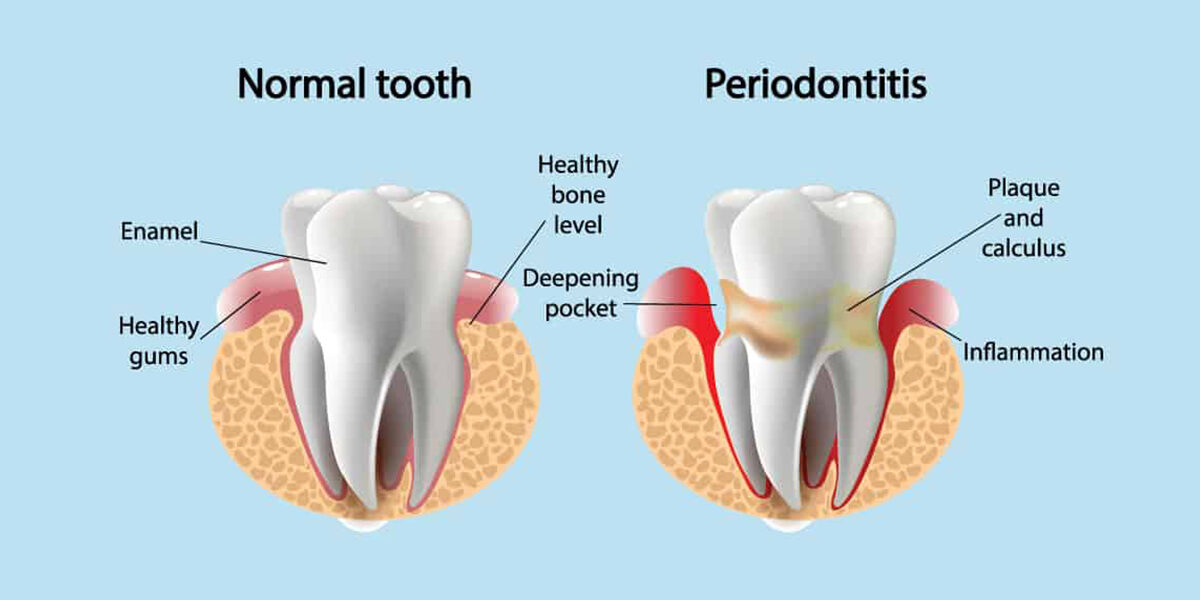10 Important points about Periodontal Pocketing
Periodontal Procedures
Patients undergoing periodontal therapy because of jaw pain, Periodontitis, sometimes called gum disease, is a common occurrence. Gum disease frequently begins with periodontal pockets, which signify an infection that could worsen. Gum disease is linked to tooth loss and can lead to other problems like diabetes and heart disease.
Periodontal Pockets: What Are They?
Periodontal pockets typically develop as gingivitis turns into severe gum disease. When these pockets are still in their early stages, excellent dental hygiene can stop them or decrease their effects. But if they are neglected, germs may eventually spread from the gums to the jawbone and result in tooth loss.
Gums that are in good health are pink, firm, and located near to your teeth, with just the top portion not directly attached. The sulcus is the term for this small opening or flap. Food particles and germs accumulate in the sulcus on a daily basis, and brushing and flossing twice a day can help remove them.
This region begins to spread as gum disease worsens, forming a bigger pocket where your toothbrush can’t get to and where germs can thrive. Gum disease has begun to progress after a pocket is 4 to 5 mm deep. The issue gets harder to cure as the pocket size increases from 7 to 12 mm.
You could encounter a number of things in addition to expanding periodontal pockets, including:
Pus-filled, puffy, and red gums
Pain while chewing
Halitosis that mouthwash cannot cure
Visible gum recession
Missing teeth
Gingivitis, a condition brought on by plaque, a sticky material formed of food and bacteria, beginning to build up in your mouth, is what causes periodontal pockets to form. When plaque isn’t completely removed, it produces tartar, which can only be eliminated by a dentist during a professional teeth cleaning.
Tartar also aggravates gum inflammation and redness, which promotes the development of periodontal pockets. Bacteria may spread beyond the gumline and ultimately attack the bone as the gum tissue separates from your teeth.
Untreated gingivitis develops into periodontal disease, and at its most advanced stage, periodontitis. Plaque assaults the gum tissue and begins to erode the bone during this stage, enlarging the gum pockets.

Identification of Periodontal Pockets
Your dentist uses a probe to measure the sulcus’ depth and size to check for the presence of periodontal pockets. As a toothbrush can still reach this depth, one to three millimetres is considered typical. Treatment is necessary for pockets that are deeper than 4 mm, especially when there is redness, bleeding, or irritation.
X-rays may be required to assess the severity of your periodontal pockets if your dentist feels that they are also associated with bone loss.
Determinants of Periodontal Pockets
Periodontal pockets are more likely to form in people who don’t brush and floss at least twice daily. This becomes worse if:
Regular intake of sugar
Chew or snort tobacco
Utilise medications having a side effect of dry mouth
Are overweight or obese, under a lot of stress, lacking in vitamin C, going through hormonal changes associated with ageing,
Live with rheumatoid arthritis, Crohn’s illness, diabetes, cardiovascular disease, AIDS or HIV
Have a family history of periodontitis and gum disease Are receiving cancer therapy
Periodontal Pocket Treatment
Regular intake of sugar
Chew or snort tobacco
Utilise medications having a side effect of dry mouth
Are overweight or obese, under a lot of stress, lacking in vitamin C, going through hormonal changes associated with ageing,
Live with rheumatoid arthritis, Crohn’s illness, diabetes, cardiovascular disease, AIDS or HIV
Have a family history of periodontitis and gum disease Are receiving cancer therapy
Periodontal Pocket Treatment
Patients should: to stop developing periodontal disease and periodontal pockets.
Regularly schedule cleanings with the dentist
Use a soft-bristled toothbrush and tartar-control toothpaste to brush and floss at least twice daily.
Eat less sweet and sugary stuff.







